On March 15, 2020, the U.S. began implementing shutdown orders to curb the spread of Covid-19. Two years later, we started to reopen and began measuring what happened to us all when we locked down for two years.
What happens to people, relationships, and our sense of connection?
HubSpot CEO Yamini Rangan introduced the Crisis of Disconnection at the first in-person Inbound conference post-global lockdown.
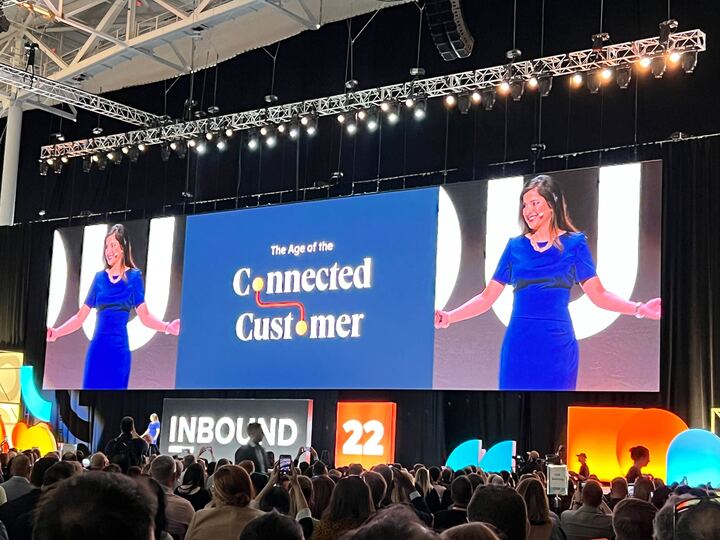
Simply put, coming out of a prolonged period of technological innovation to drive connection, we all feel more disconnected than ever.
A 2021 study by Deloitte found that the number of devices and apps we use daily ballooned during the pandemic. The same report suggests that while the number of apps and devices to help “connect” us grew, it also reduced the time spent consuming information, stressing us out and leading to digital fatigue.
This cycle of transformation, spurred by the global pandemic, led to three pillars of disconnection that businesses feel even more in today’s uncertain market.
- Siloed Systems: As businesses hurried to become digital overnight, they turned to point solutions to solve specific problems. This results in siloed systems and disconnected data that don’t connect, causing friction for businesses as they look to engage with customers.
- Channel Fatigue: As face-to-face was taken away as an option and everyone turned to similar digital channels, we all experienced a sense of digital fatigue. What used to work from email, advertising, blogs, and social media doesn’t anymore.
- People: At the heart of all of this, us. Despite the Zoom calls and peloton rides, we felt a sense of disconnection from each other.
As we move through another cycle of uncertainty post-pandemic, how can companies account for the Crisis of Disconnection and develop B2B marketing strategies to win in the midst of it?
3 Strategies to Combat the Crisis of Disconnection and Win Your Audience
Consolidate Siloed Tech
At the onset of Covid-19, the transition to being fully digital was quick and out of necessity for many companies, creating disjointed and inefficient tech stacks. While grasping for point solutions got you through the pandemic, you might now have an inflated tech budget. Subscription expense, expense in training your team, the cost associated with your team switching between systems across the customer journey, and lost opportunity cost due to gaps in data across your customer journey.
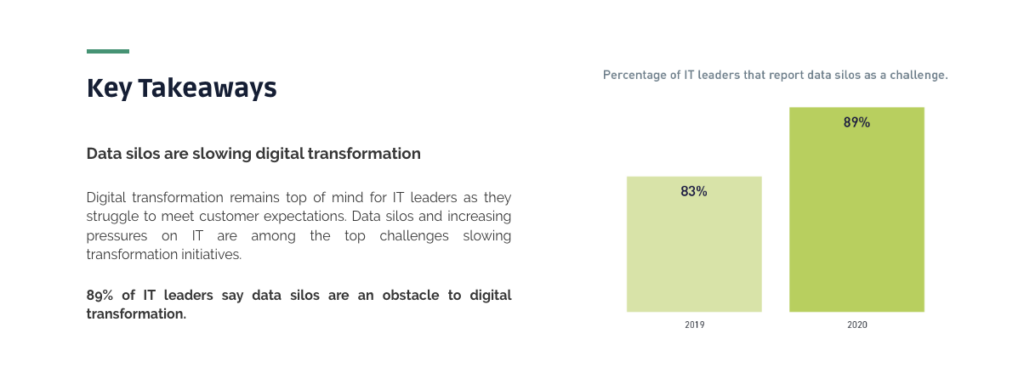
You may also feel overwhelmed with how to right the ship. That’s okay. Take a breath and consider the following order of operations as you proceed.
- Tech audit: Dive into your existing tech stack. How often are you using each tool? Are there redundant tools? Are you missing features or wishing that a tool could do something else?
- Evaluate and Choose Consolidation Platform: There are likely newer options that can do the same thing as multiple tools currently in your tech stack. For example, HubSpot offers sales outreach tools that can replace some tools specifically designed for that. You can search for additional features in your existing tools; plenty of sync tools will make your experience more unified if you need to keep the tools you have.
- Change Management Plan: Make sure to get all stakeholders on board. Listen to their opinions and ensure your proposed new tools meet their needs. Understand that some existing tools may need to be used until the new ones are set up. Ensure that training is in place once the implementation is complete.
- Project Plan: Make a timeline that makes sense depending on the tools you need to remove or add. Align with any partners you are working with to ensure everyone is on the same page. Come up with a drop-dead date that you can stick to for project completion. Incorporate training where necessary.
- Post-Rollout Evaluation: After implementing the tools, do a regular check-in. Check-in after a month, three months, and six months. Make sure to evaluate adoption and if the new tools are creating efficiencies in the work.
Create Context – Not Fatigue
Regarding digital, we’ve been trained to blog our hearts out and do anything we can to make Google happy.
In a 2022 study from SEMRush, nearly ⅔ of Google searches don’t end in a click.
First-Party Data
Every day, there seems to be a new twist in personal privacy requirements online. Now more than ever, businesses need to understand the value of and process for building first-party data, the information you collect online and offline from your customers.
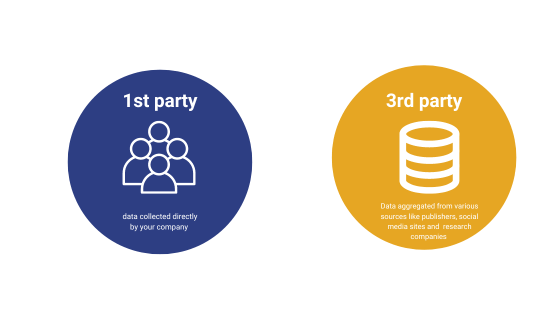
With the HubSpot CRM, you can collect this information in a responsible, privacy-focused way and then deploy your ad strategies with companies like Google or LinkedIn.
Using first-party data can grow revenue and conversions and decrease ad costs when synced with ad platforms.
Go Offline
Too often, when digital doesn’t work, marketers just do more digital, hoping something finally gives. Here’s where direct mail, from print to gifts, can allow you to create context and break through the noise. In Merkle’s research, direct mail is considered a sleeping giant, with 40% of every generation from Z to Boomer visiting a brand website after receiving direct mail.
Further, a 2022 Forrester report for Direct Mail company PFL found that 46% of companies find their buyers less likely to engage with digital marketing, while offline touchpoints have performed 44% better than a year ago.
With HubSpot, you can orchestrate a variety of personalized direct mail experiences to enhance your customer journey from:
- Sending a handwritten birthday note to customer contacts with Handwrytten
- Customizing a special newborn gift to send that prospect you’ve been talking to that just went out on maternity leave
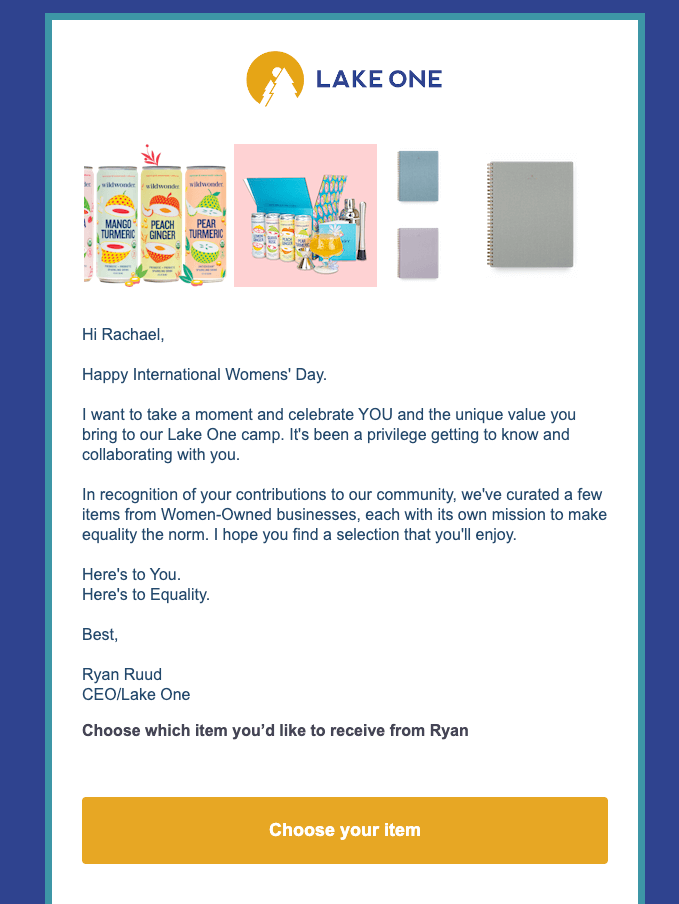
Personalize & Individualize
Twilio’s digital fatigue research identifies that nearly half of U.S. buyers will quit a brand if their experience isn’t personalized. Who wouldn’t? We all want to feel valued.
When we use terms like “email blast,” we’re not valuing anyone. We’re sending mass, generic emails about nothing related to our prospects and customers; chances are they don’t feel seen.
“Dear [name], I can help your business” only goes to the spam folder. To make an impression on potential and current customers, focus on individualizing useful content. This can include adding the following:
- Relevant offers: Including specific information about the sender’s business and providing a relevant piece of content
- Personalized deliverable: Creating a customer deliverable, whether a short video outlining the use case for this customer, an info sheet with service/product suggestions, etc.

Customers have many choices for where they take their business; they choose you! Let them know that you appreciate their support and value your relationship.
There are many ways you can show appreciation and further connection, but to name a few:
- Celebrate milestones: Say they have been customers for one year, send them an email acknowledging their anniversary, or include them in a newsletter.
- Shout them out: If your company is B2B, reposting their content or calling out their accomplishments on social media is a great way to show support and connect.
- Create exclusive offers: Celebrate loyal customers with special content, VIP discounts, additional offers, etc.
Create Community, Not Campaigns
As marketers, we’re trained in campaign thinking. For our B2B buyers, we often get stuck treating their journey like it’s linear when it’s more like this:
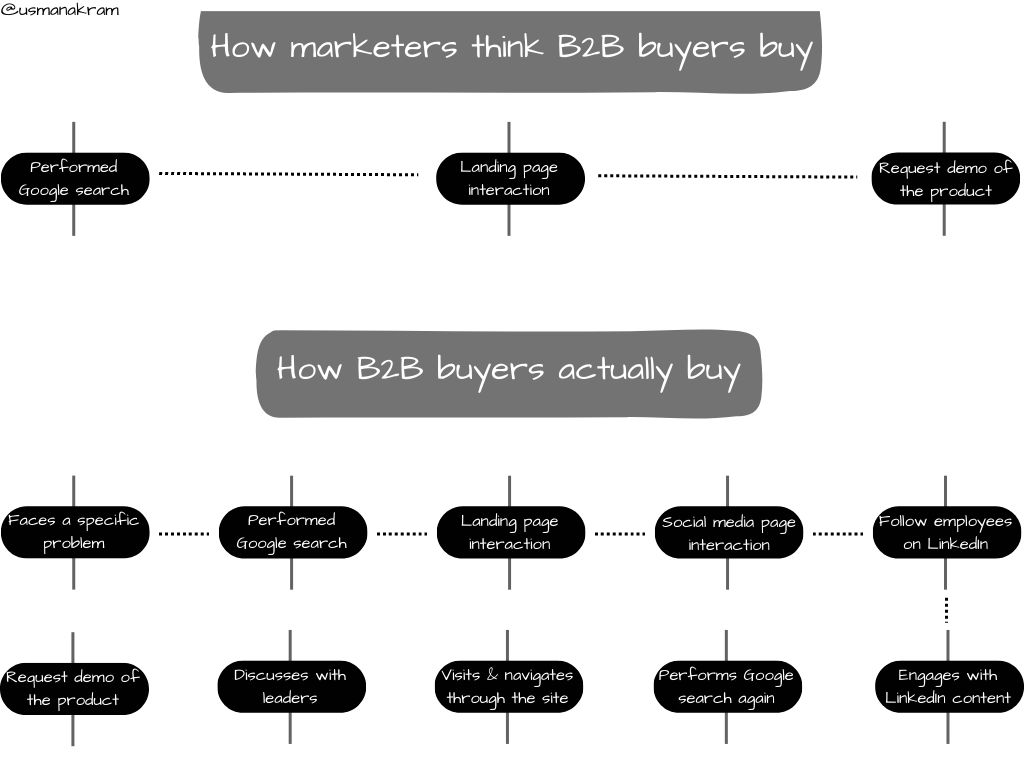
We create campaign after campaign trying to push them through the linear journeys we’ve designed for them, forgetting that people and humans are at the center of the journey.
According to a study by Sprout Social, 57% of customers will increase their spending when they feel connected to the company, and 76% will buy from them over a competitor.
With so many of us feeling disconnected from each other, what can we do as businesses and marketers with this knowledge?
Create communities, not campaigns.
In his book Build Your Community, Richard Millington outlines four different types of communities organizations can look to build- communities designed for Mutual Support, Exploration, Influence, and Belonging. All four of these communities look like great fits to help buyers in that crazy buying journey above – while helping create a sense of connection between the people in the community.
Build Your Connection Roadmap to Win Amidst the Crisis of Disconnection
Wondering how to beat the Crisis of Disconnection? Book a meeting with a Lake One Growth Strategist to review your tech stack and channels and create a winning B2B marketing strategy framework now.

